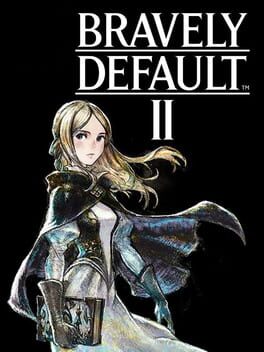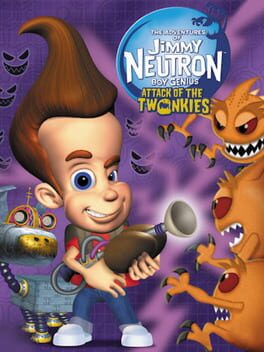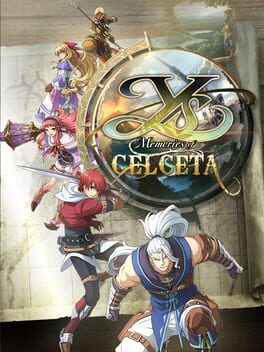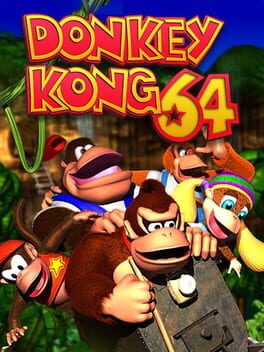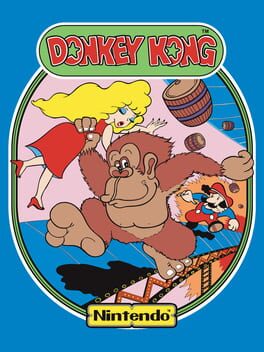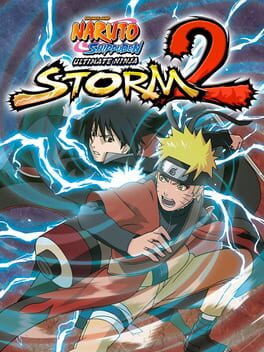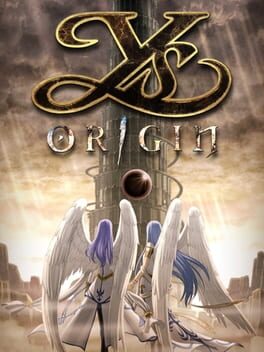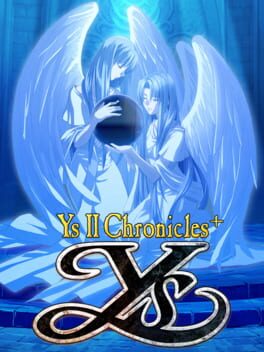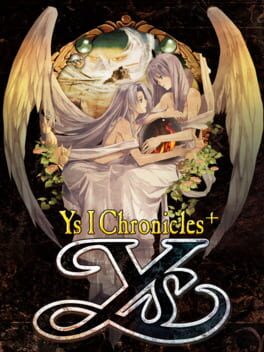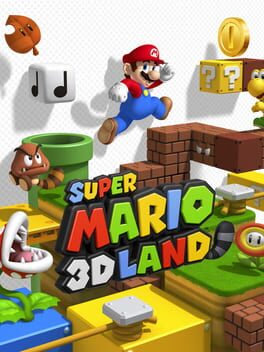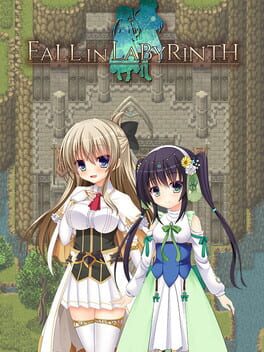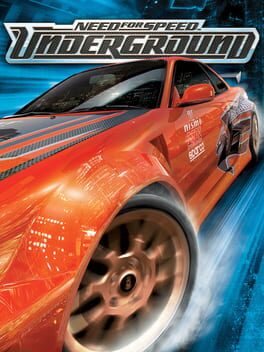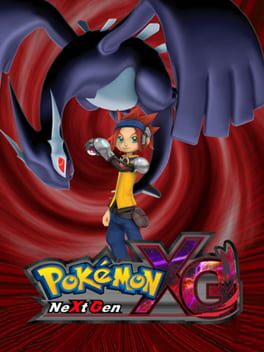2021
Originally, I had this game on the Switch, until my copy stopped working because of...reasons, and so here we are now. This game, in my opinion, is one of those "it's pretty meh but gets better plotwise in the second half" kind of RPGs. The first few chapters honestly don't feel very interesting and I didn't get too invested until the sequence at the end of Chapter 3. I'll be honest, I wasn't too big on the characters in this game and still heavily prefer the Bravely Default 1 cast, and in some cases, the Bravely Second cast, but maybe that's because Tiz and Edea are returning characters.
The main antagonist (before the real one we get no real info on until over halfway through the game), honestly was really weak. He clearly went to the Walhart School of "solve conflict with even more conflict" and failed his class. Backstory on this guy was hidden behind a sidequest and told to us by another character instead of getting the information organically. I feel like Gloria specifically suffers the same fate, having most of her main development locked behind sidequests. Speaking of sidequests, why was there no quest log in this game? On top of that, you can only set markers for 3 sidequests at a time? Why? These were honestly some pretty dumb design choices.
This game having zero relation to the past two games I think hurts it a bit. Making the Asterisks more important to the overall story instead of just being an excuse for the job system was nice, but what baffles me is why only two are optional when almost all the others are given via the story. The story was passable. None of that "fight 4 bosses 4 additional times for the true ending" nonsense from Default or "press Start in the first fight unprompted" from Second, but it's way of guiding you to the true ending was a step in a better direction, even if I was a bit iffy about it.
But one of the main draws of games like this and Final Fantasy V or X-2 is the job system. Part of the fun is finding ways to shatter the kneecaps of your various foes by abusing the system to your advantage, and in a way, this game does allow that sort of freedom. Some of the earlygame classes have things in them that can help smash the difficulty, like Thief's Godspeed Strike or Beastmaster's second specialty, which can lead to insane stat boosting if you're proactive on capturing monsters. I feel like White Mage did get a bit of a nerf, especially with the massive nerfing Spiritmaster got compared to Default where it served to amplify White Mage's abilities. Black Mage is still bleh and there's no Spell Fencer equivalent this time to use. I also wasn't too big on how certain useful passives, like Pierce Default or Angelic Ward are locked to being specialties instead of just being passives you can equip like in the old games.
That brings me to the one thing that grinded my gears the most about this game, and that's counters. This system is objectively the single worst part of the game. First, only enemies can do it. Second, you won't know what they counter until it's too late and you're already getting smacked for performing certain actions, or the enemy gets free BP to set up their moves. Worse, every Asterisk holder starting from the second boss on and regular enemies included, have counters. Don't equip Counter-Savvy and waste one of your precious passive slots? Too bad, time to taste constant pain. The final boss was a major offender of "counter borderline any action" and it was awful.
Rematches with the Asterisk holders literally allowed them to get free BP as a counter to ANY action sometimes, which could lead to a certain Arcanist blowing your party to hell with high powered magic that not even two heavily boosted Beastmasters could endure.
Now, I don't want to say this is a bad game. It's...alright, but earlygame can be pretty grindy if you want those JP Up passives to make life easier in the future, and there's the matter of raising up jobs. I would honestly say play it if you really, really like games with a job system or are a fan of Default and Second.
The main antagonist (before the real one we get no real info on until over halfway through the game), honestly was really weak. He clearly went to the Walhart School of "solve conflict with even more conflict" and failed his class. Backstory on this guy was hidden behind a sidequest and told to us by another character instead of getting the information organically. I feel like Gloria specifically suffers the same fate, having most of her main development locked behind sidequests. Speaking of sidequests, why was there no quest log in this game? On top of that, you can only set markers for 3 sidequests at a time? Why? These were honestly some pretty dumb design choices.
This game having zero relation to the past two games I think hurts it a bit. Making the Asterisks more important to the overall story instead of just being an excuse for the job system was nice, but what baffles me is why only two are optional when almost all the others are given via the story. The story was passable. None of that "fight 4 bosses 4 additional times for the true ending" nonsense from Default or "press Start in the first fight unprompted" from Second, but it's way of guiding you to the true ending was a step in a better direction, even if I was a bit iffy about it.
But one of the main draws of games like this and Final Fantasy V or X-2 is the job system. Part of the fun is finding ways to shatter the kneecaps of your various foes by abusing the system to your advantage, and in a way, this game does allow that sort of freedom. Some of the earlygame classes have things in them that can help smash the difficulty, like Thief's Godspeed Strike or Beastmaster's second specialty, which can lead to insane stat boosting if you're proactive on capturing monsters. I feel like White Mage did get a bit of a nerf, especially with the massive nerfing Spiritmaster got compared to Default where it served to amplify White Mage's abilities. Black Mage is still bleh and there's no Spell Fencer equivalent this time to use. I also wasn't too big on how certain useful passives, like Pierce Default or Angelic Ward are locked to being specialties instead of just being passives you can equip like in the old games.
That brings me to the one thing that grinded my gears the most about this game, and that's counters. This system is objectively the single worst part of the game. First, only enemies can do it. Second, you won't know what they counter until it's too late and you're already getting smacked for performing certain actions, or the enemy gets free BP to set up their moves. Worse, every Asterisk holder starting from the second boss on and regular enemies included, have counters. Don't equip Counter-Savvy and waste one of your precious passive slots? Too bad, time to taste constant pain. The final boss was a major offender of "counter borderline any action" and it was awful.
Rematches with the Asterisk holders literally allowed them to get free BP as a counter to ANY action sometimes, which could lead to a certain Arcanist blowing your party to hell with high powered magic that not even two heavily boosted Beastmasters could endure.
Now, I don't want to say this is a bad game. It's...alright, but earlygame can be pretty grindy if you want those JP Up passives to make life easier in the future, and there's the matter of raising up jobs. I would honestly say play it if you really, really like games with a job system or are a fan of Default and Second.
I had set the bar for this game pretty low, considering it's a game based off an episode of a TV show, but wow, maybe I should've set the bar lower. This game is basically discount Luigi's Mansion without any of the good parts of Luigi's Mansion. The game feels very frontloaded, as the latter half of the game barely has any levels at all and feels like "do one stage, then the resident bad boss fight."
Speaking of the boss fights, all of them are pretty awful, but I'd say the Frozen Lake Boss is the worst of the bunch. At least with the Playground Boss and Rollercoaster Boss, they're easy once you figure out their gimmicks. but with the Frozen Lake, you're fighting against ice physics. I also learned that if you die, you have to do the fight over again. Very much a 2004 thing, but not any less annoying to deal with ice physics. The final boss is just a combo of the previous three bosses and their skills, but with the same ice physics in the Frozen Lake Boss.
Most of the gizmos you can make are gimmick items that serve no use while others are more usable, like the Speed Sneakers for general speed and the Sticky Sneakers to handle those pesky ice physics. The Health Recharge is useful too when you need health and you're waiting for health pickups to respawn. Most of the inventions and super inventions felt like they barely had time in the sun beyond the VDR and the Sheenograph, as they're both mandatory for capturing the Twonkies Luigi's Mansion vacuum style. Goddard also felt very underused as well, only being used in a couple of levels and totally ditched after that for the rest of the game.
The only level I liked a bit is actually the one that gatekept me from beating it as a kid, the Retroland level, where you need to play the arcade games to get tokens to reach the rollercoaster, which goes directly to a boss fight after a cutscene level. The arcade games were a fun distraction, but I know why I never beat this game as a kid, and it's that you're required to get the high score on all the games to progress. It's not hard, but it may require a bit of patience, something child me didn't have much of.
All in all, it's a game based on a TV show, and these kinds of things generally aren't very good to begin with. This game is one example of that.
Speaking of the boss fights, all of them are pretty awful, but I'd say the Frozen Lake Boss is the worst of the bunch. At least with the Playground Boss and Rollercoaster Boss, they're easy once you figure out their gimmicks. but with the Frozen Lake, you're fighting against ice physics. I also learned that if you die, you have to do the fight over again. Very much a 2004 thing, but not any less annoying to deal with ice physics. The final boss is just a combo of the previous three bosses and their skills, but with the same ice physics in the Frozen Lake Boss.
Most of the gizmos you can make are gimmick items that serve no use while others are more usable, like the Speed Sneakers for general speed and the Sticky Sneakers to handle those pesky ice physics. The Health Recharge is useful too when you need health and you're waiting for health pickups to respawn. Most of the inventions and super inventions felt like they barely had time in the sun beyond the VDR and the Sheenograph, as they're both mandatory for capturing the Twonkies Luigi's Mansion vacuum style. Goddard also felt very underused as well, only being used in a couple of levels and totally ditched after that for the rest of the game.
The only level I liked a bit is actually the one that gatekept me from beating it as a kid, the Retroland level, where you need to play the arcade games to get tokens to reach the rollercoaster, which goes directly to a boss fight after a cutscene level. The arcade games were a fun distraction, but I know why I never beat this game as a kid, and it's that you're required to get the high score on all the games to progress. It's not hard, but it may require a bit of patience, something child me didn't have much of.
All in all, it's a game based on a TV show, and these kinds of things generally aren't very good to begin with. This game is one example of that.
They say it's not about the destination, but the journey to reach said destination. When it comes to this particular journey, it was...alright. Having a party this time around was nice, even though I primarily stuck to using Adol or Karna. The story was alright, at least until the villains came into the picture, because they were probably one of the weakest parts of the game. Even the final boss wasn't all that interesting, with the boss before it being a lot more interesting to fight.
The big thing about this game was mapping out the forest, and it's pretty particular about how you get your percentage points, so I ended up spending time before the final dungeon rubbing Karna's face up against any surface I could throw her at to get 100% (and a Steam guide for figuring out potential spots I missed.)
One other thing that sort of disappointed me was the ending. You don't really find out what happened to Eldeel or your party members after the ending, or really anything at all. The game just sort of...ends. Ys II at least had a satisfactory conclusion, and sure, you stop the big bad, but some closure would've been nice.
I'm not saying I don't like this game. It's perfectly servicible, but a few things about it, like a lack of camera control, the fairly weak story, and eh ending, puts it directly in the 3 range, at least in my opinion.
Game has some solid music, though.
The big thing about this game was mapping out the forest, and it's pretty particular about how you get your percentage points, so I ended up spending time before the final dungeon rubbing Karna's face up against any surface I could throw her at to get 100% (and a Steam guide for figuring out potential spots I missed.)
One other thing that sort of disappointed me was the ending. You don't really find out what happened to Eldeel or your party members after the ending, or really anything at all. The game just sort of...ends. Ys II at least had a satisfactory conclusion, and sure, you stop the big bad, but some closure would've been nice.
I'm not saying I don't like this game. It's perfectly servicible, but a few things about it, like a lack of camera control, the fairly weak story, and eh ending, puts it directly in the 3 range, at least in my opinion.
Game has some solid music, though.
At first, I was going to give this game some slack because of it's age...but then I had the bright idea of going for all the Star Coins, and that kindness was quickly taken back. On it's own, this is a serviceable game at times. Yes, I get it, it's a very early DS title and the first of the "New" series of games, of which Wii patches up a lot of the issues this game has.
Now, for the reason for me taking back my earlier kindness, and that's the Star Coins. Some are innocent enough, but many are not, especially in the lategame. The Mini Mushroom is mandatory for some, which takes away your current powerup and you die in 1 hit, alongside having a floatier jump. Sure, I got some value from it during the second half of World 8, but that's because I abused save states. I would never, ever, try getting all the Star Coins in this game without using save states.
Speaking of which, the Mega Mushroom, the item the game was advertised around, gets almost no use. You need it for a grand total of 2 Star Coins and it barely appears in any levels at all. Having it in your item slot is more a waste than a help. Then there's the Blue Shell, which is only able to be obtained from the red flying blocks or from Mushroom Houses. Also required for a couple of coins and they almost never give you these items on levels that require them, forcing you to get your own. Problem is, the mushroom houses are almost finite, and require Star Coins to get to more often than not.
One thing I did like, though, was how your stage progress on the bottom screen was hidden in Ghost Houses. To be honest, I wasn't a big fan of this game. Mario felt slippery at times, swimming is extremely slow and bad, and the reliance on a powerup that not only robs you of your Fire Flower if you have one, but is almost never given to you when you need it, forcing you to replay 1-4 to get one, I'm glad I played New Super Mario Bros. Wii first. It's a vastly better game than this one is.
I do think this game has the best castle music, though.
Now, for the reason for me taking back my earlier kindness, and that's the Star Coins. Some are innocent enough, but many are not, especially in the lategame. The Mini Mushroom is mandatory for some, which takes away your current powerup and you die in 1 hit, alongside having a floatier jump. Sure, I got some value from it during the second half of World 8, but that's because I abused save states. I would never, ever, try getting all the Star Coins in this game without using save states.
Speaking of which, the Mega Mushroom, the item the game was advertised around, gets almost no use. You need it for a grand total of 2 Star Coins and it barely appears in any levels at all. Having it in your item slot is more a waste than a help. Then there's the Blue Shell, which is only able to be obtained from the red flying blocks or from Mushroom Houses. Also required for a couple of coins and they almost never give you these items on levels that require them, forcing you to get your own. Problem is, the mushroom houses are almost finite, and require Star Coins to get to more often than not.
One thing I did like, though, was how your stage progress on the bottom screen was hidden in Ghost Houses. To be honest, I wasn't a big fan of this game. Mario felt slippery at times, swimming is extremely slow and bad, and the reliance on a powerup that not only robs you of your Fire Flower if you have one, but is almost never given to you when you need it, forcing you to replay 1-4 to get one, I'm glad I played New Super Mario Bros. Wii first. It's a vastly better game than this one is.
I do think this game has the best castle music, though.
1999
If I had to describe this game in any way, it's "collectathon hell." So many things to collect, many of them mandatory. You have to beat the original Donkey Kong twice to beat this game. Beaver Bother is an abysmal minigame to play. Diddy's Rocketbarrel is by far the single worst thing to control in the entire game, and they love to force you to use it.
Now, I don't have all but dislike for this game. The soundtrack is very good, for one thing. I liked how each Kong had their own sets of moves that only they could use. Sure, Lanky and Chunky are going to be borderline wiped from existence after this game, but it was nice to use them while they existed.
However, there's a reason it only took me about 14 hours to beat this game, and that's because I had the benefit of quality of life options thanks to using the DK64 Randomizer, like allowing you to switch Kongs without a Tag Barrel. If I played this game totally vanilla, my playtime probably would've doubled. Backtracking is insane in this game, and without the quality of life stuff and occasional save states, it would be even worse. I already had to revisit Japes and Aztec multiple times, so I don't want to imagine how much worse it could've gotten.
On top of that, control in this game is generally very jank. There were times I did long jumps when I wanted to do high jumps, just because of a misclick since Z is used for so much in this game. The previously mentioned Rocketbarrel is by far the worst offender of jank control in this game. Movement in water was also not fun, but this game predates Majora's Mask, which had amazing control in water as Zora.
Like, here's the thing. I don't want to hate this game. I liked the different areas, the music was great, but the jank control, somewhat frustrating minigames, a final area on a time limit, and a 5 part final boss that put a lot of those jank things (and K Rool's hitbox) just don't do it for me. It's not a bad game, and if you like collectathons, you may love it, but the bad outweighs the good for me in this one. At the very least, I'm glad I finally got the chance to play and finish it myself.
Now, I don't have all but dislike for this game. The soundtrack is very good, for one thing. I liked how each Kong had their own sets of moves that only they could use. Sure, Lanky and Chunky are going to be borderline wiped from existence after this game, but it was nice to use them while they existed.
However, there's a reason it only took me about 14 hours to beat this game, and that's because I had the benefit of quality of life options thanks to using the DK64 Randomizer, like allowing you to switch Kongs without a Tag Barrel. If I played this game totally vanilla, my playtime probably would've doubled. Backtracking is insane in this game, and without the quality of life stuff and occasional save states, it would be even worse. I already had to revisit Japes and Aztec multiple times, so I don't want to imagine how much worse it could've gotten.
On top of that, control in this game is generally very jank. There were times I did long jumps when I wanted to do high jumps, just because of a misclick since Z is used for so much in this game. The previously mentioned Rocketbarrel is by far the worst offender of jank control in this game. Movement in water was also not fun, but this game predates Majora's Mask, which had amazing control in water as Zora.
Like, here's the thing. I don't want to hate this game. I liked the different areas, the music was great, but the jank control, somewhat frustrating minigames, a final area on a time limit, and a 5 part final boss that put a lot of those jank things (and K Rool's hitbox) just don't do it for me. It's not a bad game, and if you like collectathons, you may love it, but the bad outweighs the good for me in this one. At the very least, I'm glad I finally got the chance to play and finish it myself.
1981
In order to beat Donkey Kong 64, beating this is required...twice. I never played the original Donkey Kong to completion. Being born in the mid 90s, I was too young to truly experience the days of arcades. Sure, there are some very "this is an old arcade game" things I don't like about this game, like how falling from a certain height can kill you outright, and 75m was the poster child for dumb deaths like this.
Being patient was a big key to victory in stages like 50 and 100m, and we all know that patience isn't exactly a thing gamers are big on, especially these days. My second run (for the Nintendo Coin) was surprisingly tame, but that may be because I knew what I was up against.
I will admit, I did use save states, but if I were playing on Wii U VC, I'd be doing the exact same thing. This isn't the late 90s, and I was in a hurry to get this and Jetpac done so I can avoid dealing with the Rareware and Nintendo Coins at the end of the game.
In a way, I am glad I got the chance to actually play and beat the original Donkey Kong. At the same time, I still find it very stupid how it's mandatory to beat this twice to beat a totally different game. Why are you such a collectaton hell, Donkey Kong 64?
Being patient was a big key to victory in stages like 50 and 100m, and we all know that patience isn't exactly a thing gamers are big on, especially these days. My second run (for the Nintendo Coin) was surprisingly tame, but that may be because I knew what I was up against.
I will admit, I did use save states, but if I were playing on Wii U VC, I'd be doing the exact same thing. This isn't the late 90s, and I was in a hurry to get this and Jetpac done so I can avoid dealing with the Rareware and Nintendo Coins at the end of the game.
In a way, I am glad I got the chance to actually play and beat the original Donkey Kong. At the same time, I still find it very stupid how it's mandatory to beat this twice to beat a totally different game. Why are you such a collectaton hell, Donkey Kong 64?
While I watched a bit of Naruto back in the day, Shippuden is almost totally uncharted territory for me. I know a couple of things, so playing a game that is an abridged version of an anime based on a manga may not be the world's greatest idea.
At the very least, I liked this game more than the first one. It's still a fighting game, so it primarily sticks to that. Overworld movement does feel a bit slow, though, and it seems like most of the side content is locked behind finishing the main story. Speaking of the main story, it was alright. Again, an abridged version of the anime, so context for some things is either compressed heavily or outright removed. The deaths of certain characters is also very heavily telegraphed, but that may just be me having seen these kinds of cases enough that I can read death flags.
One big change compared to the first game is that your health doesn't restore between fights, requiring you to use items to heal...outside of the points they either change your playable character or after certain cutscenes, so sometimes I wonder why even bother with the non restoring health? Collecting materials to get ninja tools was alright, and the tools themselves, mainly the ones that boost your strength and defense got more useful in the lategame when enemies get more trigger happy with the substitution jutsu and feel more tanky in general.
I'd say the game was alright. This does show the insane power scaling and how much further it's going to fly off the handle in the near future, though.
At the very least, I liked this game more than the first one. It's still a fighting game, so it primarily sticks to that. Overworld movement does feel a bit slow, though, and it seems like most of the side content is locked behind finishing the main story. Speaking of the main story, it was alright. Again, an abridged version of the anime, so context for some things is either compressed heavily or outright removed. The deaths of certain characters is also very heavily telegraphed, but that may just be me having seen these kinds of cases enough that I can read death flags.
One big change compared to the first game is that your health doesn't restore between fights, requiring you to use items to heal...outside of the points they either change your playable character or after certain cutscenes, so sometimes I wonder why even bother with the non restoring health? Collecting materials to get ninja tools was alright, and the tools themselves, mainly the ones that boost your strength and defense got more useful in the lategame when enemies get more trigger happy with the substitution jutsu and feel more tanky in general.
I'd say the game was alright. This does show the insane power scaling and how much further it's going to fly off the handle in the near future, though.
2006
According to the story timeline I'm reading for an order to play these, this is the third game in the list, and it's a prequel. It also mandates three playthroughs for the whole experience, with the unlockable character after beating the game once being the canon ending and where the bulk of the "prequel-ish" parts come into play.
That three playthroughs part is my big red flag, because once you've played through the areas of the tower once, you'll probably know what to do the other two times, as there's not much variation between playthroughs aside from how characters work. Yunica had probably my favorite moves but had the least story relevance of the three. Hugo was a ranged character, and while he had some interesting moments, I did his playthrough first and had to endure the struggle of fighting the bosses for the first time with a character who felt very weak overall in terms of kill potential. As mentioned before, the third character, we'll call him Claw for spoiler reasons, had the most story relevance, but I wasn't a fan of his moves. He also fights the real final boss.
Gone is the world of bonk combat and in is the world of slaughter your foes through more traditional action RPG methods (unless you're Hugo, then you shoot things with magic). The game is more of an action game than an RPG, though. I would say it's also fairly light on the story at times, with most plot beats only coming up at certain points of certain floors.
I will say I did like the game...just not enough to give it 4 stars. The three sort of samey playthroughs through the same areas, with two playthroughs almost being identical in some aspects besides some dialogue changes, is the main reason I'm giving it a 3.
That three playthroughs part is my big red flag, because once you've played through the areas of the tower once, you'll probably know what to do the other two times, as there's not much variation between playthroughs aside from how characters work. Yunica had probably my favorite moves but had the least story relevance of the three. Hugo was a ranged character, and while he had some interesting moments, I did his playthrough first and had to endure the struggle of fighting the bosses for the first time with a character who felt very weak overall in terms of kill potential. As mentioned before, the third character, we'll call him Claw for spoiler reasons, had the most story relevance, but I wasn't a fan of his moves. He also fights the real final boss.
Gone is the world of bonk combat and in is the world of slaughter your foes through more traditional action RPG methods (unless you're Hugo, then you shoot things with magic). The game is more of an action game than an RPG, though. I would say it's also fairly light on the story at times, with most plot beats only coming up at certain points of certain floors.
I will say I did like the game...just not enough to give it 4 stars. The three sort of samey playthroughs through the same areas, with two playthroughs almost being identical in some aspects besides some dialogue changes, is the main reason I'm giving it a 3.
2013
The second half of the story, and it actually feels like a proper conclusion unlike Ys I had. Generally speaking, I would say I had more fun with this one than the first one. Heals were more avaliable since you could find Herbs and use Apples to heal, magic was a nice addition since you now had a ranged option among lesser used things like Light Magic to find hidden paths and Shield Magic, which was very fair and balanced and locked to basically the end of the game for that reason.
The game generally felt less harsh on the difficulty on Normal than Ys I, but the sheer reliance on using Fire Magic on all but the last two bosses in the game was a bit eh, in my opinion. At the very least, the bosses weren't as absurd as the first game's was, so that's a plus. No vampire bat boss who's only able to be hit for about a fraction of a second here.
The main things I would say are issues I had though are the backtracking and the sheer length of the final dungeon, which alone felt three times longer than all the other areas you visited. There's also a healthy amount of backtracking, but that gets a bit easier when you get the Return Magic, which was mandatory anyway.
To end this, Feena is a nice girl and if anything bad happens to her, Adol will come and bonk them to oblivion...since magic is gone now, so he can't use Fire Magic to burn things now.
The game generally felt less harsh on the difficulty on Normal than Ys I, but the sheer reliance on using Fire Magic on all but the last two bosses in the game was a bit eh, in my opinion. At the very least, the bosses weren't as absurd as the first game's was, so that's a plus. No vampire bat boss who's only able to be hit for about a fraction of a second here.
The main things I would say are issues I had though are the backtracking and the sheer length of the final dungeon, which alone felt three times longer than all the other areas you visited. There's also a healthy amount of backtracking, but that gets a bit easier when you get the Return Magic, which was mandatory anyway.
To end this, Feena is a nice girl and if anything bad happens to her, Adol will come and bonk them to oblivion...since magic is gone now, so he can't use Fire Magic to burn things now.
2013
Going into writing my thoughts on this game, I have to remember this is an old game...remade. I'm surprised by how short it was, but I was also very dumb at the start and didn't know you had to equip the sword you got for free.
But as a game, it was short and fairly simple. Fighting via running into your enemies did get a bit of getting used to, and once you get a hang of things, regular enemies aren't too challenging to handle. Bosses, on the other hand, are horrendous in this game. From the phantom who warps around, only giving you a moment to hit him while also avoiding long bars of blue fire to the damn vampire bat who is only able to be hit for a moment before he goes back to his bat phase.
The final boss is also pretty rough too. He's just a bullet hell boss who flies around and can kill you easily with either the vanishing floor or the overload of projectiles flooding the battlefield. He also doesn't appear at all in the flesh until literally the end of the game. We hear about him from a few NPCs, but never actually see him.
I do like some of the characters, though. But I think they've given away too easily the identity of our two blue haired ladies way too quickly when you put two and two together.
I will get around to playing the second game, since it's the second part of this story, but I'm not sure when.
But as a game, it was short and fairly simple. Fighting via running into your enemies did get a bit of getting used to, and once you get a hang of things, regular enemies aren't too challenging to handle. Bosses, on the other hand, are horrendous in this game. From the phantom who warps around, only giving you a moment to hit him while also avoiding long bars of blue fire to the damn vampire bat who is only able to be hit for a moment before he goes back to his bat phase.
The final boss is also pretty rough too. He's just a bullet hell boss who flies around and can kill you easily with either the vanishing floor or the overload of projectiles flooding the battlefield. He also doesn't appear at all in the flesh until literally the end of the game. We hear about him from a few NPCs, but never actually see him.
I do like some of the characters, though. But I think they've given away too easily the identity of our two blue haired ladies way too quickly when you put two and two together.
I will get around to playing the second game, since it's the second part of this story, but I'm not sure when.
2011
This game, for the most part, isn't too hard. Most platforming challenges can easily be solved by the Super Leaf (and Stone Leaf in the Special worlds), and generally, this is a Mario game, which isn't exactly the hardest thing in the world if you're only playing the main game.
The game really bares it's fangs with the Special worlds, though. Harder levels and modified versions of the gimmicks you dealt with before with new things added like timed levels and the revenge of the cosmic clone from Galaxy 2, with them being huge sometimes. It doesn't help my case that I used Luigi after Special World 1, as he has the higher jump and lower traction he typically has in these games, which led to more deaths than needed.
I do feel some of the gimmicks barely had time to make an impact, though, like the rhythm blocks or the moving platforms on lava that depended on where you stood. The lack of consistent theme also threw me off a bit, as Mario games typically have their themed levels together. Going from a water level to, for example, a snow level, was a bit strange.
We did get more Dry Bowser, though, but only in the Special Worlds, but I'll take any victory for our bony boy any day. Overall, I had fun with it. Why a 3 instead of a 4, though? Special 7-4 was an awful time, and one of the reasons I started using save states halfway through the Special worlds. That and I was too lazy to constantly go back to Special 1-1 to farm more Stone Leafs. World Special 8 was also full of levels that were either timed, had the cosmic clone, or both. Sure, lives are pretty plentiful in this game, but laziness prevails over all.
The game really bares it's fangs with the Special worlds, though. Harder levels and modified versions of the gimmicks you dealt with before with new things added like timed levels and the revenge of the cosmic clone from Galaxy 2, with them being huge sometimes. It doesn't help my case that I used Luigi after Special World 1, as he has the higher jump and lower traction he typically has in these games, which led to more deaths than needed.
I do feel some of the gimmicks barely had time to make an impact, though, like the rhythm blocks or the moving platforms on lava that depended on where you stood. The lack of consistent theme also threw me off a bit, as Mario games typically have their themed levels together. Going from a water level to, for example, a snow level, was a bit strange.
We did get more Dry Bowser, though, but only in the Special Worlds, but I'll take any victory for our bony boy any day. Overall, I had fun with it. Why a 3 instead of a 4, though? Special 7-4 was an awful time, and one of the reasons I started using save states halfway through the Special worlds. That and I was too lazy to constantly go back to Special 1-1 to farm more Stone Leafs. World Special 8 was also full of levels that were either timed, had the cosmic clone, or both. Sure, lives are pretty plentiful in this game, but laziness prevails over all.
2021
Played with the 18+ patch, naturally.
Before beginning, a huge shoutout to cunny_sensei's guide for the game, which has just about all the info you need to make your life easier. Be warned there are story spoilers in the guide, so read with caution.
The short version of how I felt about this game was "it's ok." I liked the setting of a town where adventurers visit in order to take on the big dungeon laying around and how said dungeon has different biomes in it. Earlygame, however, is pretty grindy, since you're not very strong and magic costs quite a bit of MP considering how little you have. As per the standard in a lot of these games, once you reach a certain point, you shatter the difficulty by nuking everything with ease. Hunter's Death Strike can instakill most regular encounters (but with a pretty steep MP cost) and with the right gem investment, a mage's lategame skills can do at minimum 10k to even bosses. Tension skills, when you eventually get them, are incredibly broken in terms of damage output, but your tension goes back to zero when you go to another room, so it's not entirely reliable.
That leads into one negative I do have about the game, though. Barring one optional party member, everyone starts at Level 1, even a character given to you late in the main story. For your main trio, if you change classes, that new class will be Level 1, which disincentivizes changing classes partway through. The game tries to point you towards making Fano a mage with her unique ability, but I made her a Hunter because I didn't read her unique skills beforehand. You can probably go any direction with your main trio's classes, though, but I'd advise at least having one of each of the three.
The story was...alright, a bit light at times since the end goal for the first arc is getting to the depths of the labyrinth. The plot twists were pretty nice, but because of the guide, I was spoiled to a few plot points, and the sidequests were pretty hit and miss. Two I do recommend doing are Torte and Fano's after beating the game, as it does feel like decent closure to their arcs.
Overall, I liked parts of the game, but the earlygame is that one thing that could drive people away. I'd say get it if you like the characters or the concept, or maybe wait for a sale just in case.
Before beginning, a huge shoutout to cunny_sensei's guide for the game, which has just about all the info you need to make your life easier. Be warned there are story spoilers in the guide, so read with caution.
The short version of how I felt about this game was "it's ok." I liked the setting of a town where adventurers visit in order to take on the big dungeon laying around and how said dungeon has different biomes in it. Earlygame, however, is pretty grindy, since you're not very strong and magic costs quite a bit of MP considering how little you have. As per the standard in a lot of these games, once you reach a certain point, you shatter the difficulty by nuking everything with ease. Hunter's Death Strike can instakill most regular encounters (but with a pretty steep MP cost) and with the right gem investment, a mage's lategame skills can do at minimum 10k to even bosses. Tension skills, when you eventually get them, are incredibly broken in terms of damage output, but your tension goes back to zero when you go to another room, so it's not entirely reliable.
That leads into one negative I do have about the game, though. Barring one optional party member, everyone starts at Level 1, even a character given to you late in the main story. For your main trio, if you change classes, that new class will be Level 1, which disincentivizes changing classes partway through. The game tries to point you towards making Fano a mage with her unique ability, but I made her a Hunter because I didn't read her unique skills beforehand. You can probably go any direction with your main trio's classes, though, but I'd advise at least having one of each of the three.
The story was...alright, a bit light at times since the end goal for the first arc is getting to the depths of the labyrinth. The plot twists were pretty nice, but because of the guide, I was spoiled to a few plot points, and the sidequests were pretty hit and miss. Two I do recommend doing are Torte and Fano's after beating the game, as it does feel like decent closure to their arcs.
Overall, I liked parts of the game, but the earlygame is that one thing that could drive people away. I'd say get it if you like the characters or the concept, or maybe wait for a sale just in case.
Remember when EA actually made good games? Yeah, me too. In a lot of ways, I prefer this game to Underground 2. For one, Eddie isn't brought up for the first time halfway through the game. He's a goal to reach. Along with that, the other racers are far more memorable than just about any character from Underground 2, despite how simple they are as characters.
This is far from a perfect game, though. The rubber banding can be pretty insane and hitting traffic is incredibly punishing, sometimes leading to just overall dead races. Two events in particular are infamous in this game, and those are Kurt's Killer Ride and Enduro Street Circuit. Kurt's Killer Ride was my roadblock as a kid, and Enduro Street Circuit is the poster child for rubber banding BS.
This game did, however, give me a new found hatred for drift events. They suck, at least in my opinion. I did, however, learn to dislike Drag races a little less than I did during Underground 2, and Melissa is what Caleb wishes he was as a final boss.
So, another relic of my childhood has been conquered. It's a shame that I'll have little reason to listen to the OST again outside of nostalgia, though.
This is far from a perfect game, though. The rubber banding can be pretty insane and hitting traffic is incredibly punishing, sometimes leading to just overall dead races. Two events in particular are infamous in this game, and those are Kurt's Killer Ride and Enduro Street Circuit. Kurt's Killer Ride was my roadblock as a kid, and Enduro Street Circuit is the poster child for rubber banding BS.
This game did, however, give me a new found hatred for drift events. They suck, at least in my opinion. I did, however, learn to dislike Drag races a little less than I did during Underground 2, and Melissa is what Caleb wishes he was as a final boss.
So, another relic of my childhood has been conquered. It's a shame that I'll have little reason to listen to the OST again outside of nostalgia, though.
2016
Pokemon XG is a game with interesting improvements, but suffers from the usual Pokemon romhack curse of "lategame level spiking." Don't get me wrong, there are aspects I liked about it. Shadow Pokemon distribution is far better, so Cipher Key Lair won't have a bunch of weak mons to catch that won't really fit a team, Fairy type and the physical/special split was added, the new Shadow moves were nice to have.
However, there are moments in this game where the level frame flies off the handle. Eugan's Level 30 Pikachu in the first Agate Village visit, the Level 50 Robo Groudon, and Citadark Isle's Cipher Admins. On top of that, by Key Lair Gorrigan, Shadow Slayer and Shadow Hunter become commonplace Shadow moves, meaning nothing is safe from super effective damage anymore. There is also an incredibly high number of rain teams in this game, or Pokemon that set up weather of some kind. You're more or less expected to run your own weather to counter the opponent's weather to tip the scales in your favor. Yes, you will need to do this.
Going back to Citadark Isle, that's where the biggest red flag came up for me. Your opponents prior to Lovrina have Level 50, as that's the new standard thanks to Gorrigan. Lovrina, however, has high 50s out of nowhere with a Level 60 Gardevoir. You are not warned of this sudden level spike, and grinding at Mt. Battle sometimes becomes necessary to keep up with the levels of your opponents, especially since Shadow moves are always super effective on non Shadow mons.
On top of this, Greevil has a new first phase before Shadow Lugia with a team of 6 regular Pokemon. Why did they add this? Sure, you're going to chuck the Master Ball at Lugia, but you don't get healed before Lugia.
Certain Pokemon got changed abilities or even their Mega Evolution stats, some of which are good, while others, not so much. Aerodactyl suddenly becomes a lot more of a pain when it's much faster and stronger than usual. Metagross also becomes a monstrosity that you'll encounter a few times on the isle.
While some of the bad aspects outweigh the good parts, I did think XG was a nice change from the original XD, even though the story is pretty much unchanged. I do think the...creative liberties made with Lovrina's dialogue changes are a bit cringe, though.
However, there are moments in this game where the level frame flies off the handle. Eugan's Level 30 Pikachu in the first Agate Village visit, the Level 50 Robo Groudon, and Citadark Isle's Cipher Admins. On top of that, by Key Lair Gorrigan, Shadow Slayer and Shadow Hunter become commonplace Shadow moves, meaning nothing is safe from super effective damage anymore. There is also an incredibly high number of rain teams in this game, or Pokemon that set up weather of some kind. You're more or less expected to run your own weather to counter the opponent's weather to tip the scales in your favor. Yes, you will need to do this.
Going back to Citadark Isle, that's where the biggest red flag came up for me. Your opponents prior to Lovrina have Level 50, as that's the new standard thanks to Gorrigan. Lovrina, however, has high 50s out of nowhere with a Level 60 Gardevoir. You are not warned of this sudden level spike, and grinding at Mt. Battle sometimes becomes necessary to keep up with the levels of your opponents, especially since Shadow moves are always super effective on non Shadow mons.
On top of this, Greevil has a new first phase before Shadow Lugia with a team of 6 regular Pokemon. Why did they add this? Sure, you're going to chuck the Master Ball at Lugia, but you don't get healed before Lugia.
Certain Pokemon got changed abilities or even their Mega Evolution stats, some of which are good, while others, not so much. Aerodactyl suddenly becomes a lot more of a pain when it's much faster and stronger than usual. Metagross also becomes a monstrosity that you'll encounter a few times on the isle.
While some of the bad aspects outweigh the good parts, I did think XG was a nice change from the original XD, even though the story is pretty much unchanged. I do think the...creative liberties made with Lovrina's dialogue changes are a bit cringe, though.
The end of an era. This game marks the end of both Crossbell and Erebonia's arcs. I do like how the story is more focused, and the character bloat really only applies to the Reverie Corridor and maybe the final dungeon, but by that time, you likely have a number of strong party members to use for encounters.
Arts got yet another buff with all enemies having at least one weakness to an art, and with the higher elements back, the game really encourages arts nuking, which is fine, but if you're not an evasion tank or a dedicated arts user, the character loses a lot more value unless they can impede enemy arts or crafts. On top of that, with certain characters only being in certain parts (outside the corridor), they're bound to fall behind on orbment setups unless you're investing into them.
Story-wise, I like how it was structured with each of the main protagonists having their own things going on. The game even managed to redeem a certain someone who wasn't exactly the most upstanding person the past two games with their actions.
The sad part is that it'll likely be the last time for a long time I see many of these characters. I know Swin, Nadia, and Fie reappear in Calvard, but that's just how it goes with a overarching series.
Why am I giving it 5 stars when I gave Cold Steel IV a 4? Because I liked this one more in terms of story structure and character moments.
Arts got yet another buff with all enemies having at least one weakness to an art, and with the higher elements back, the game really encourages arts nuking, which is fine, but if you're not an evasion tank or a dedicated arts user, the character loses a lot more value unless they can impede enemy arts or crafts. On top of that, with certain characters only being in certain parts (outside the corridor), they're bound to fall behind on orbment setups unless you're investing into them.
Story-wise, I like how it was structured with each of the main protagonists having their own things going on. The game even managed to redeem a certain someone who wasn't exactly the most upstanding person the past two games with their actions.
The sad part is that it'll likely be the last time for a long time I see many of these characters. I know Swin, Nadia, and Fie reappear in Calvard, but that's just how it goes with a overarching series.
Why am I giving it 5 stars when I gave Cold Steel IV a 4? Because I liked this one more in terms of story structure and character moments.
